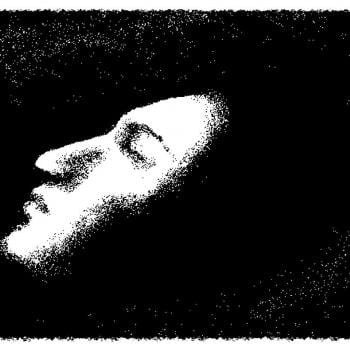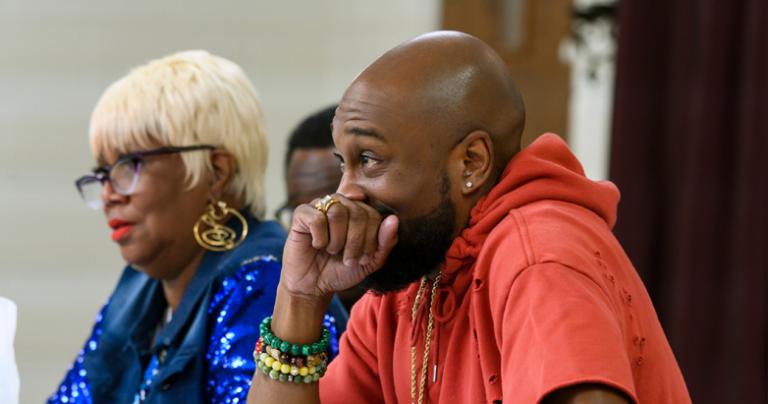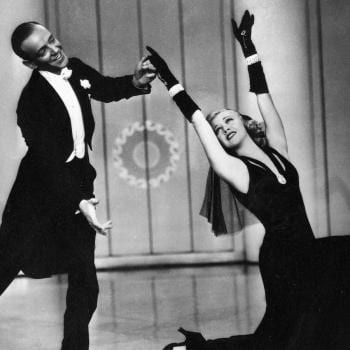- Trending:
- Pope Leo Xiv
- |
- Israel
- |
- Trump
- |
- Social Justice
- |
- Peace
- |
- Love

RELIGION LIBRARY
New Age
Ethics and Community
Gender and Sexuality
The New Age movement's attitude toward sexuality and gender is characterized by an emphasis on equality and openness. This attitude encompasses an openness to a variety of sexual and gender identities and an overall view that sexuality represents one manner-among many others-of self-development and gaining greater spiritual awareness.
The New Age understanding of gender and sexuality emerged from several historical developments. Most notably, the New Age movement originated during the era that scholars call "second wave feminism," the 1960s and 1970s in the United States of America and Great Britain. Second-wave feminists challenged the implicit gender hierarchies present in modern western society, called for a reappraisal of gender norms, and declared that women must exert control over their bodies and selves. Second-wave feminists were responsible for opening up a variety of vocational fields to women beyond traditional secretarial, teaching, and nursing careers and pushed for the equality of women in all spheres. Among religious movements, second-wave feminists called for women's ordinations, reappraisals of the use of exclusively male language in prayer and worship, and the creation of women-centered rituals and practices. Each of these positions carried over into the New Age movement.
The other historical antecedent relevant to the treatment of gender and sexuality in the New Age movement is that of the predecessor religions that served as sources and influences to the New Age. The 19th-century metaphysical religions of Theosophy, New Thought, and Spiritualism all embraced notions of gender egalitarianism, female leadership, and the inherent value of women. Historians such as Ann D. Braude, Catherine Wessinger, and Catherine L. Albanese have indicated that these new religions of the 19th century actually helped the first wave of feminism succeed. When the New Age absorbed many concepts from these religions, it also assumed their positions and norms on gender and sexuality. For example, the Spiritualist assumption that women could serve as mediums, and the actual Spiritualist practice of favoring women as mediums, carried over into the New Age, with the result that most professional channelers are women.
Building on these historical foundations, one current within the New Age has tended toward complete gender egalitarianism. These practitioners believe that the dawning new age, the Age of Aquarius as New Agers call it, will feature equality of the genders and an end to patriarchy, which they identify as the hallmark of the ending Age of Pisces. These New Agers look at gender as merely one facet of a person's existence, a biologically determined fact of life alongside ethnicity and skin color. Such New Age practitioners therefore understand gender as irrelevant to their spiritual paths.
At the same time, a second current in the New Age looks to the Aquarian Age as one defined by the feminine spirit, inverting the Piscean tendency toward patriarchy and the power of men. Nearly all New Agers who adhere to this position accept the ultimate equality of the genders, but see the ascendancy of the feminine as a necessary corrective to the 2,000 years of male control of most aspects of culture. Such practitioners often look to the dawning feminine age as a cosmic response to the failed patriarchy of the Christian Church-and to a lesser extent the patriarchy of the other western monotheisms of Judaism and Islam.
Despite the differences between these two currents in New Age thought, most practitioners of this religious path share the same outlook on gender and sexuality. Generally, New Agers declare that a person should embrace whatever one believes is one's gender and sexual identity, employing this identity as a means of spiritual self-development. New Agers identify as homosexual, heterosexual, bisexual, transgendered, queer, gay, lesbian, faerie, and bi-gendered. In all case, practitioners understand their identities as a means of exploring the self and developing the self.
This openness to a variety of sexual and gender identities parallels the New Age view of sex as well. Nearly all New Agers consider sex a positive practice, and generally they consider sex a form of self-expression, spiritual development, and healing. In order to transform sex from a merely physical practice to a spiritual one, New Agers have borrowed sexual practices from a variety of religious traditions. Buddhist and Hindu Tantra, and Pagan sexual magick, serve as the most common sources. Within the popularized Tantric tradition, sex functions as a manner of awakening the kundalini, the inner spiritual energy source. Popular Tantra understands sex as a means toward gaining spiritual awareness and ultimately enlightenment, and as such the New Age understanding of sex possesses a strong affinity with it. Pagan sexual magick similarly looks to sex as a form of self-transformation, but frequently also adds the goal of healing. Contemporary Pagans and New Agers alike look to sacred sexual practices as a means of overcoming past sexual wounds and transforming what conventional American and European culture has portrayed as purely physical into something as spiritual as well.
The overall approach to gender and sexuality within the New Age represents the movement's rejection of what it considers mainstream religion's negative assessment of sexuality, alternative gender and sexual identities, and the place of women. This approach follows the movement's overall approach of looking to itself as an inversion of the Piscean Age. New Agers critique western monotheists, and particularly Christians, for considering sexuality sinful and dirty, devaluing female sexuality, and enforcing a rigid heterosexual patriarchy. Men and women alike in the New Age understand their own religious practices as a rejection of those norms. They envision sexuality as natural, holy, and part of a person's spiritual and psychological growth, and embrace a variety of sexual and gender identities as valid.
Back to Religion Library
The New Age understanding of gender and sexuality emerged from several historical developments. Most notably, the New Age movement originated during the era that scholars call "second wave feminism," the 1960s and 1970s in the United States of America and Great Britain. Second-wave feminists challenged the implicit gender hierarchies present in modern western society, called for a reappraisal of gender norms, and declared that women must exert control over their bodies and selves. Second-wave feminists were responsible for opening up a variety of vocational fields to women beyond traditional secretarial, teaching, and nursing careers and pushed for the equality of women in all spheres. Among religious movements, second-wave feminists called for women's ordinations, reappraisals of the use of exclusively male language in prayer and worship, and the creation of women-centered rituals and practices. Each of these positions carried over into the New Age movement.
The other historical antecedent relevant to the treatment of gender and sexuality in the New Age movement is that of the predecessor religions that served as sources and influences to the New Age. The 19th-century metaphysical religions of Theosophy, New Thought, and Spiritualism all embraced notions of gender egalitarianism, female leadership, and the inherent value of women. Historians such as Ann D. Braude, Catherine Wessinger, and Catherine L. Albanese have indicated that these new religions of the 19th century actually helped the first wave of feminism succeed. When the New Age absorbed many concepts from these religions, it also assumed their positions and norms on gender and sexuality. For example, the Spiritualist assumption that women could serve as mediums, and the actual Spiritualist practice of favoring women as mediums, carried over into the New Age, with the result that most professional channelers are women.
Building on these historical foundations, one current within the New Age has tended toward complete gender egalitarianism. These practitioners believe that the dawning new age, the Age of Aquarius as New Agers call it, will feature equality of the genders and an end to patriarchy, which they identify as the hallmark of the ending Age of Pisces. These New Agers look at gender as merely one facet of a person's existence, a biologically determined fact of life alongside ethnicity and skin color. Such New Age practitioners therefore understand gender as irrelevant to their spiritual paths.
At the same time, a second current in the New Age looks to the Aquarian Age as one defined by the feminine spirit, inverting the Piscean tendency toward patriarchy and the power of men. Nearly all New Agers who adhere to this position accept the ultimate equality of the genders, but see the ascendancy of the feminine as a necessary corrective to the 2,000 years of male control of most aspects of culture. Such practitioners often look to the dawning feminine age as a cosmic response to the failed patriarchy of the Christian Church-and to a lesser extent the patriarchy of the other western monotheisms of Judaism and Islam.
Despite the differences between these two currents in New Age thought, most practitioners of this religious path share the same outlook on gender and sexuality. Generally, New Agers declare that a person should embrace whatever one believes is one's gender and sexual identity, employing this identity as a means of spiritual self-development. New Agers identify as homosexual, heterosexual, bisexual, transgendered, queer, gay, lesbian, faerie, and bi-gendered. In all case, practitioners understand their identities as a means of exploring the self and developing the self.
This openness to a variety of sexual and gender identities parallels the New Age view of sex as well. Nearly all New Agers consider sex a positive practice, and generally they consider sex a form of self-expression, spiritual development, and healing. In order to transform sex from a merely physical practice to a spiritual one, New Agers have borrowed sexual practices from a variety of religious traditions. Buddhist and Hindu Tantra, and Pagan sexual magick, serve as the most common sources. Within the popularized Tantric tradition, sex functions as a manner of awakening the kundalini, the inner spiritual energy source. Popular Tantra understands sex as a means toward gaining spiritual awareness and ultimately enlightenment, and as such the New Age understanding of sex possesses a strong affinity with it. Pagan sexual magick similarly looks to sex as a form of self-transformation, but frequently also adds the goal of healing. Contemporary Pagans and New Agers alike look to sacred sexual practices as a means of overcoming past sexual wounds and transforming what conventional American and European culture has portrayed as purely physical into something as spiritual as well.
The overall approach to gender and sexuality within the New Age represents the movement's rejection of what it considers mainstream religion's negative assessment of sexuality, alternative gender and sexual identities, and the place of women. This approach follows the movement's overall approach of looking to itself as an inversion of the Piscean Age. New Agers critique western monotheists, and particularly Christians, for considering sexuality sinful and dirty, devaluing female sexuality, and enforcing a rigid heterosexual patriarchy. Men and women alike in the New Age understand their own religious practices as a rejection of those norms. They envision sexuality as natural, holy, and part of a person's spiritual and psychological growth, and embrace a variety of sexual and gender identities as valid.
Study Questions:
1. What was the role of Feminism in creating the New Age movement?
2. Why are women able to hold positions of leadership within the New Age movement?
3. Describe the relationship between astrology and gender. What do New Agers believe the future will hold?
4. How do New Agers understand sex?
Editor's picks See all columnists










